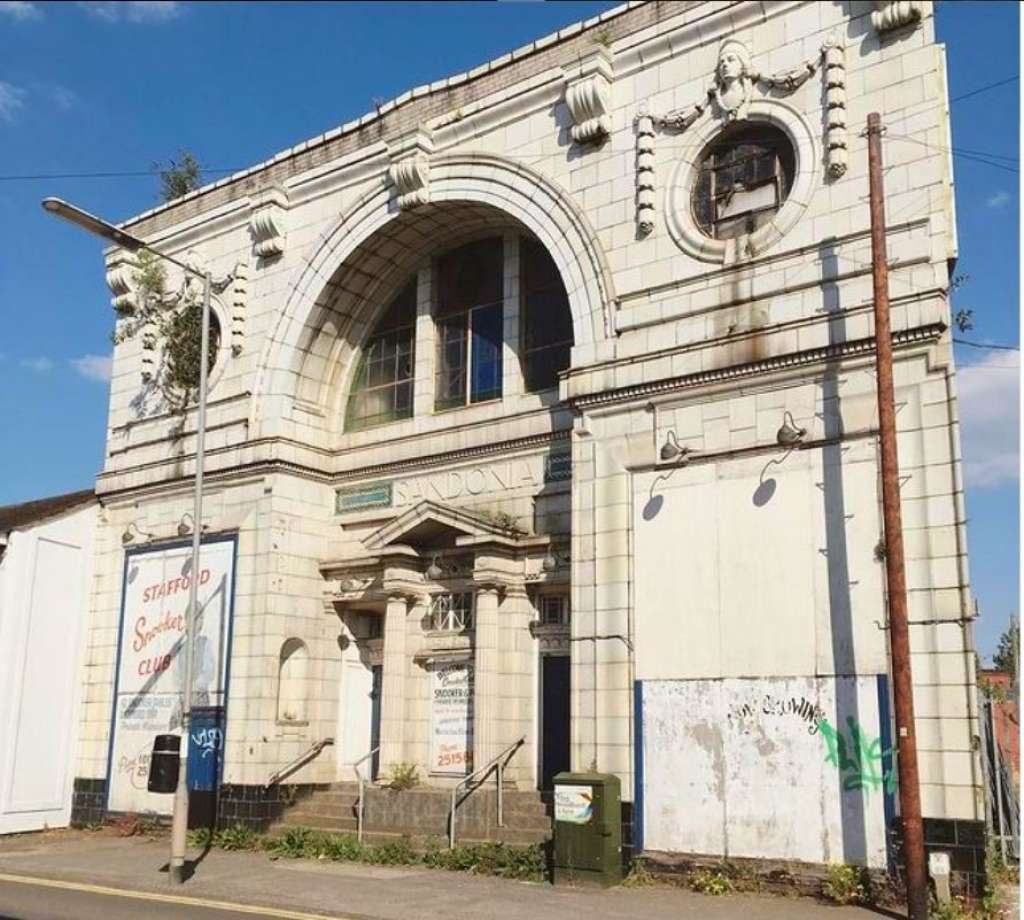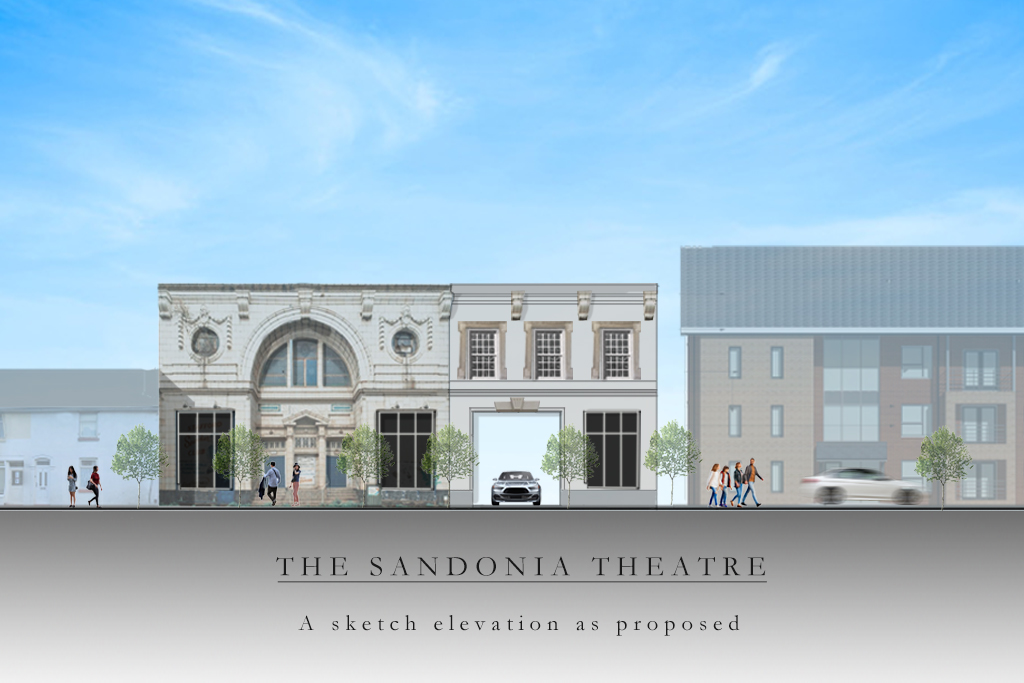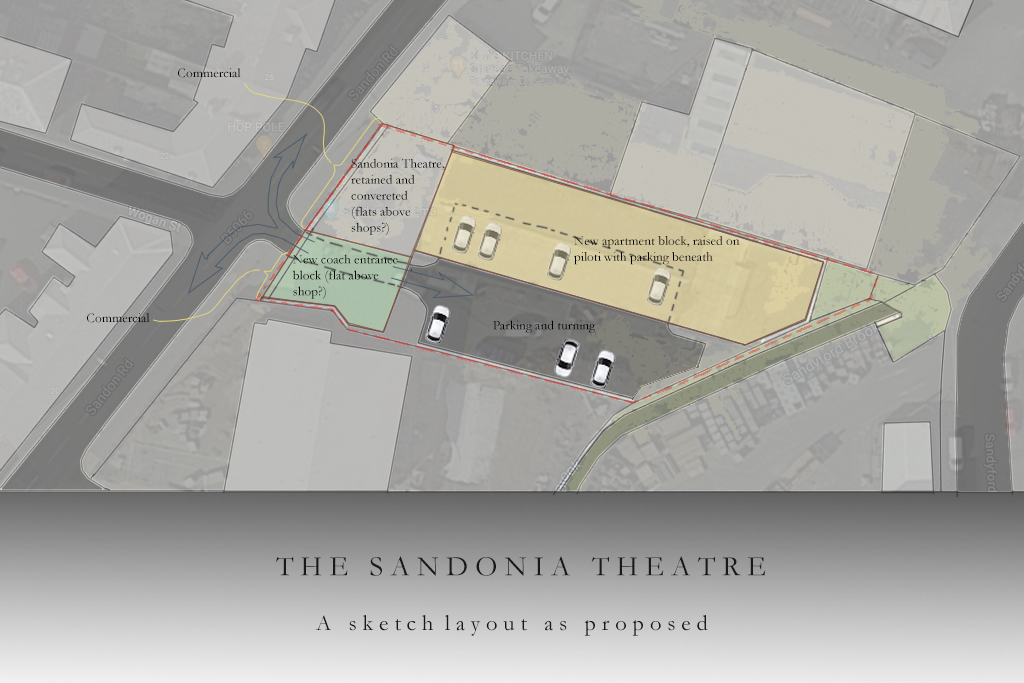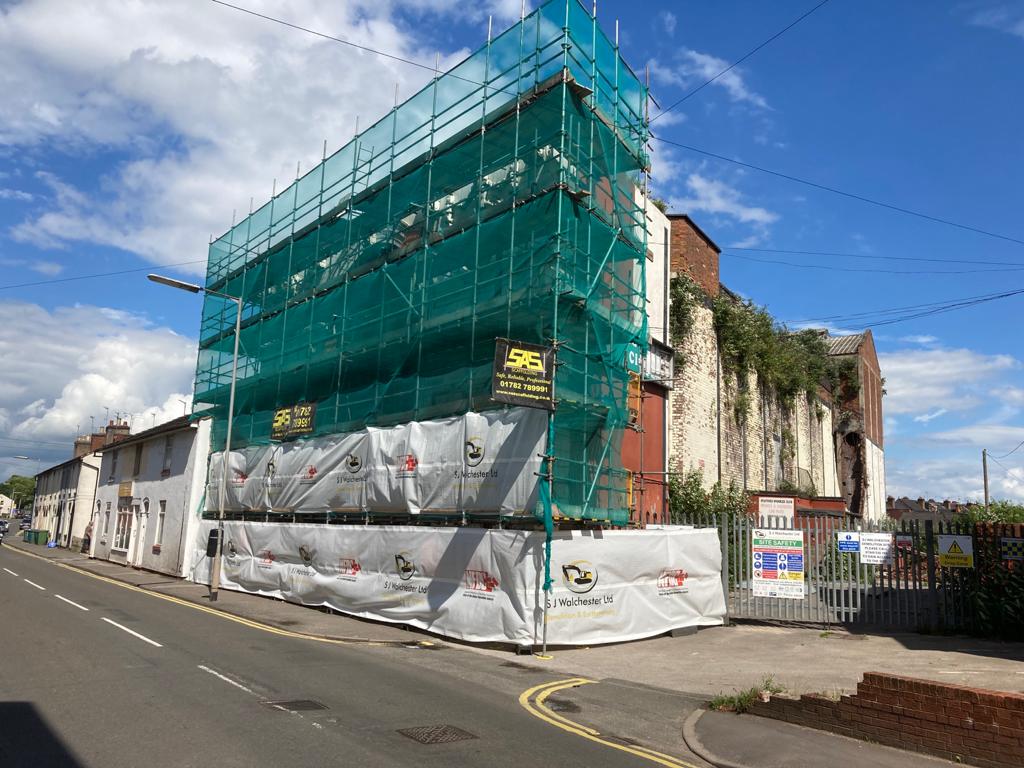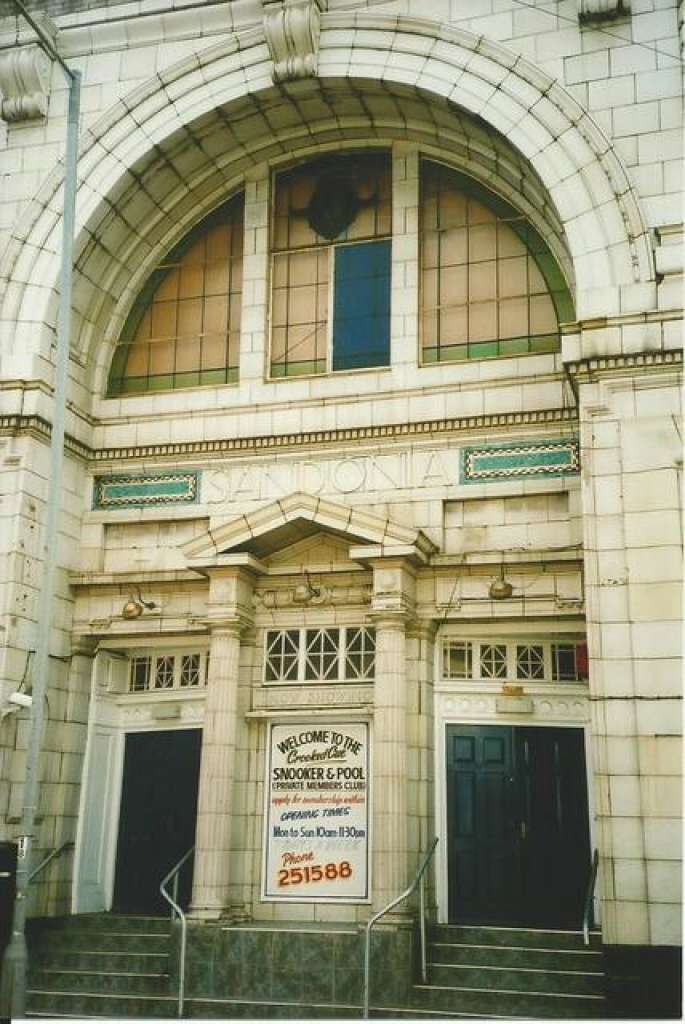PRESS RELEASE: SAVE launches new plan to preserve historic 1920s Cinema
29th October 2021
Following successful legal action to stop the demolition of a spectacular piece of early cinema architecture, SAVE Britain’s Heritage now publishes an alternative scheme for reusing the site, which will preserve the striking cinema frontage built in the form of a Roman Triumphal Arch while allowing much needed new housing to be built on the adjacent empty site.
The Sandonia Cinema on Sandon Road is a showpiece of the pioneer years of cinema in Stafford but is now subject to a planning application by its owner to demolish the 1920 building, which has drawn over 100 public letters of objection.
In response, SAVE has commissioned architect Sean Pemble to produce an alternative scheme retaining the grand 1920s frontage and filling the gap site next to it with a new sympathetically designed frontage with the same proportions and detailing as the 1920s building. The designs include a new archway which would allow access from Sandon Road through to the site behind, which could be used for new housing, as desired by the site owner.
Marcus Binney, executive president of SAVE Britain’s Heritage, says: “This is a very clever solution conveyed with great precision in the beautiful drawing and plan Mr Pemble has provided for us. This solution can produce a financial return equivalent to the scheme for 14 houses put forward by the owner of the site.”
Jack Pearce of the Save Our Sandonia campaign says: "This alternative use scheme shows how the Sandonia could become a huge asset for the local community in the future, through providing much needed housing and commercial space. It retains the beautiful facade and foyer, whilst creating an addition to the existing building which is in keeping with the built environment created by Stafford's once mighty shoe manufacturing quarter in the north of town. It would be a triumph for this area of Stafford if made a reality. We extend our thanks to SAVE, Mr Pemble and all the supporters of the campaign to retain this incredible and significant building."
Legal action
Swift action by SAVE’s lawyers in July 2021 helped stop the total loss of the Sandonia following local reports that the owner had commenced demolition without planning consent. Contractors had already torn through part of the former auditorium to the rear of the site, with the façade scaffolded ready for dismantling.
Though the handsome cinema is not listed, SAVE’s lawyers successfully questioned whether the necessary planning consent had been applied for or obtained by the owner under permitted development rights. Stafford Borough Council confirmed that no application had been made, and that consequently, the demolition was unlawful.
As a result, the Council told the owner demolition must stop and that, if they want to demolish the building, a full planning application must first be submitted and approved.
History
The Sandonia ‘Kinema’ and Theatre opened in 1920 as ‘cine-variety’ theatre, with both live performances and films being shown. It was designed by local architect Henry T. Sandy of Sandy & Norris, with an attractive white faience facade, reminiscent of this early phase of cinema building before the streamlined art deco style became the dominant form of cinema design in the 1930s onwards.
A huge central recessed arch forms the main entrance, which is flanked by one small shop either side (now boarded up), with the name ‘Sandonia’ in the stonework over the entrance. A semi-circular glazed central window is embellished with decorative oculi, garlands, and busts. Inside, a small foyer with two pairs of double doors lead to the stalls and stairs to upper foyer. The oval shaped upper foyer featured a glazed lantern.
The theatre is located some way to the north of Stafford town centre and initially it was not a great success. It was closed, sold and reopened several times until a sound system was installed in 1930 to allow it to screen 'talkies'.
Cinema use lasted until the 1960s at which point it was converted into a bingo hall, which ceased in 1990. In 1991 the stalls in the auditorium were converted to use as a snooker hall. The stalls rake was split into two terraces and the stage given a false floor over the original rake to provide level floors for the tables. A low false ceiling was installed over the stalls at balcony level and above the stage in the fly tower, but the safety curtain reportedly remained in situ. The projectors were removed and sold to a private collector.
Several applications to convert the building to an entertainment centre with bar in the late 1990s were refused on grounds on inadequate parking in the area, and the snooker hall subsequently closed in the early 2000s and the building has remained empty and disused since.
ENDS
Note to editors
1. For more information contact Ben Oakley, conservation officer at SAVE Britain’s Heritage – oakley@savebritainsheritage.org / 07388 181 181.
2. See here for our previous press release following SAVE's legal intervention in July 2021.
3. Top Image: The striking triumphal arch frontage of the Sandonia Cinema on Sandon Road (Cinema Treasures)
4. SAVE Britain’s Heritage has been campaigning for historic buildings since its formation in 1975 by a group of architectural historians, writers, journalists and planners. It is a strong, independent voice in conservation, free to respond rapidly to emergencies and to speak out loud for the historic built environment.

